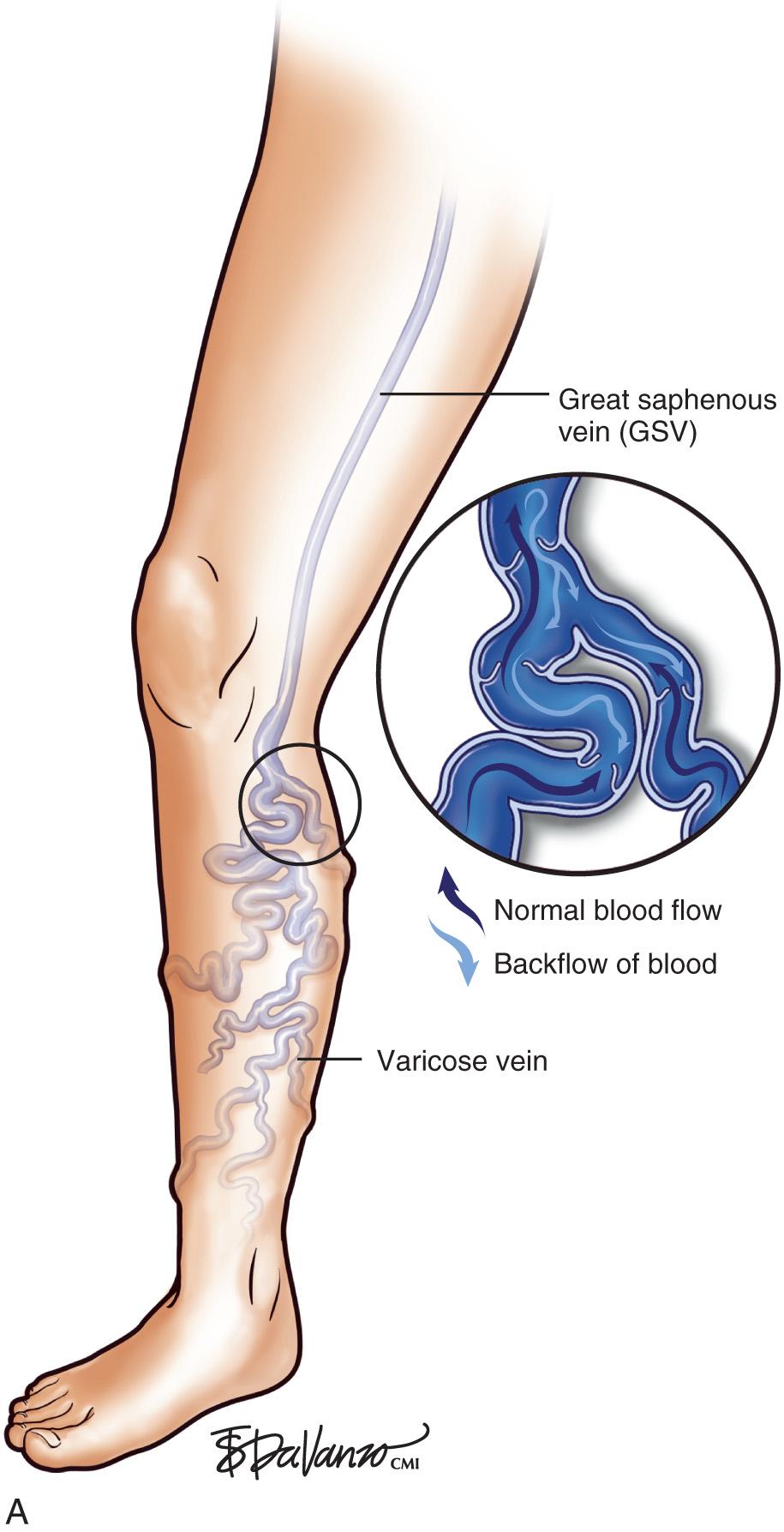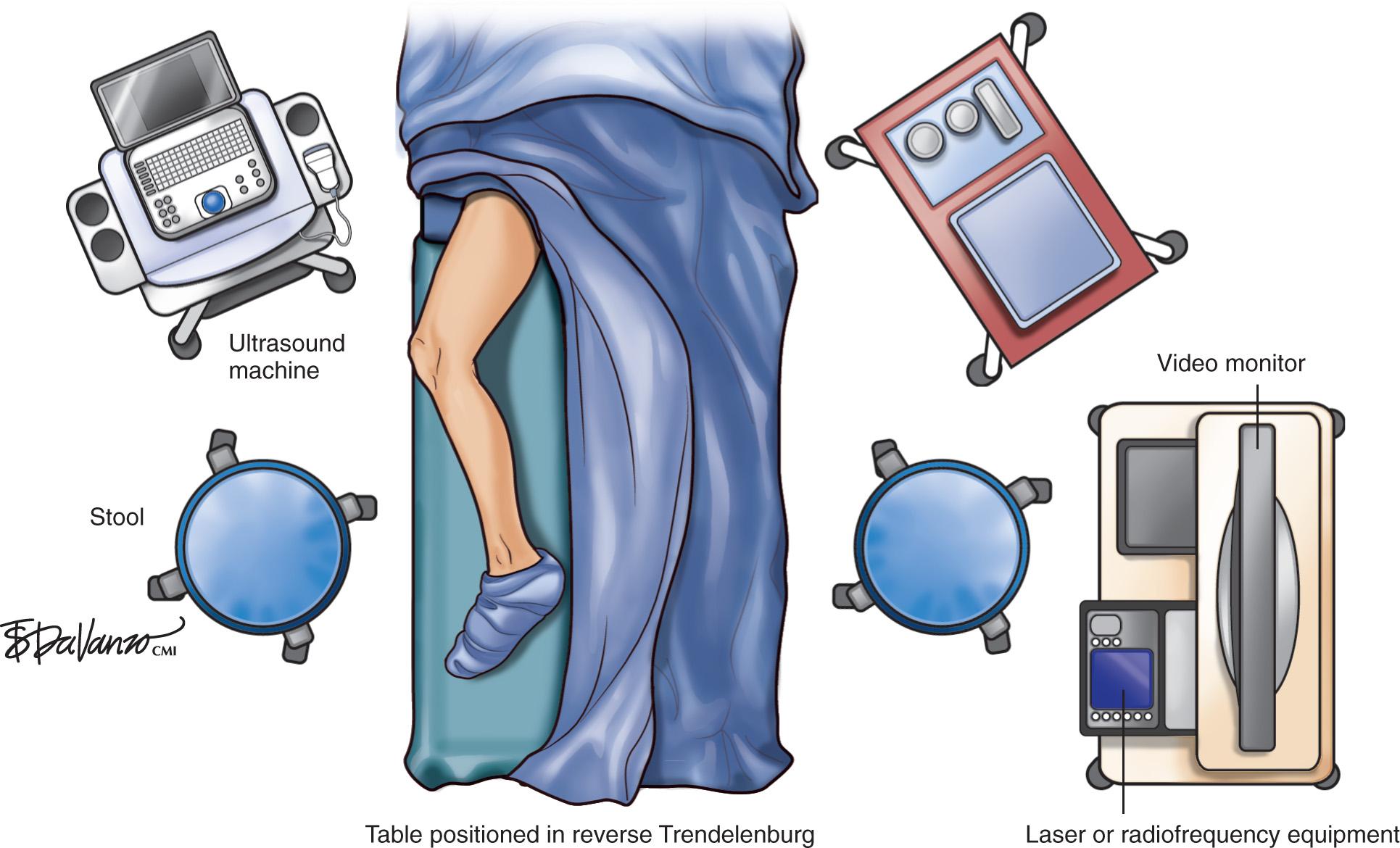Physical Address
304 North Cardinal St.
Dorchester Center, MA 02124
Treatment of this disorder has evolved from sclerotherapy to open radical surgery and then to the use of sophisticated technology, such as thermal and nonthermal catheter-based ablation.
The exact historical point in time when saphenous vein incompetence was recognized as a source of venous hypertension is unclear; however, Trendelenburg promulgated saphenofemoral ligation in 1891. In the early 20th century, stripping of the saphenous veins was added to proximal ligation. Keller described an internal stripper in 1905. Hence high ligation of the great saphenous vein (GSV) at the saphenofemoral junction (SFJ) followed by GSV stripping from groin to knee or ankle was the standard of care and was performed in the hospital setting for about 100 years.
The two methods of thermal ablation in comprehensive vein centers at present are the VNUS ClosureFAST procedure, which uses a catheter to direct radiofrequency (RF) energy from a dedicated generator (VNUS Medical Technologies, Inc., Sunnyvale, CA), and endovenous laser ablation (EVLA), which uses a laser fiber and generator to produce focused heat (multiple manufacturers). Both RF and EVLA are catheter-based endovascular interventions that use electromagnetic energy to destroy the refluxing saphenous system. Nonthermal techniques are discussed in Chapter 8 .
RF catheters were the first devices to become available to venous surgeons for endovenous thermal ablation of the GSV after garnering US Food and Drug Administration approval in 1999. In 2002, endovascular ablation of the GSV using laser energy became available in the United States.
The majority of patients (60%–70%) with varicose veins have an incompetent SFJ and GSV reflux. It is critical to recognize that bulging varicose veins are usually associated with an underlying source of venous hypertension, and treatment of the source is as important as treatment of the actual varicose vein.
Chronic venous disorders generally result from primary venous insufficiency or secondary processes, such as acute deep venous thrombosis (DVT) or trauma. An analysis of chronic venous disease (CVD) indicated that primary valvular incompetence was present in 70% to 80% of cases; secondary valvular incompetence was caused by trauma or DVT in 18% to 25%, and congenital anomaly was present in 1% to 3% of cases.
Patients with CVD will usually present to a physician with concerns referable to both medical symptoms and cosmetic appearance of their disease. Patient satisfaction results from identifying and properly treating the patient's primary concerns, which may include medical and/or cosmetic issues. Not all symptomatic patients are aware of their symptoms because the onset may be insidious. Symptoms may include leg heaviness, pain or tenderness along the course of a vein, pruritus, burning, restlessness, night cramps, edema, skin changes, and paresthesias. After treatment, patients are often surprised to realize how much discomfort they had accepted as normal. Pain caused by CVD is often improved by walking or by elevating the legs. The pain of arterial insufficiency, conversely, is worsened by ambulation and elevation. Pain and other symptoms of venous disease may intensify with the menstrual cycle, pregnancy, and in response to exogenous hormonal therapy (i.e., oral contraceptives).
As is customary for any medical condition, the physician must begin with a careful history and physical examination. The primary purpose of the clinical examination of the patient presenting with CVD is to classify the subject using the popular CEAP system (clinical [telangiectasias to skin damage], etiologic [primary, secondary, or congenital], anatomic [superficial, deep, or perforators], and pathophysiologic [reflux, obstruction, or both] patterns). For each of these major classifications, there are subgroups. For the work described in this chapter, clinical signs emerge as the most important and are grouped as follows: C1, spider telangiectasias; C2, varicose veins ( Fig. 5.1 ); C3, edema; C4, lipodermatosclerosis; C5, healed ulcer; and C6, active ulcer. Regarding treatment, the class (C) is the most important parameter to establish during the initial encounter. Treatment algorithms for chronic venous insufficiency ([CVI]; i.e., patients with more severe disease [C4, C5, C6]) are discussed in other sections of this book. This chapter focuses on the treatment of C2 disease.

Device choice is a matter of physician preference. Our center and other investigators have compared the efficacy of RF and EVLA. The ablation data are slightly better for EVLA. A few years ago, we published our 3-year data showing 94% success with RF and 98% success with laser. However, in current practice, the results are closer to 95% success with either technology. Current RF and EVLA data are presented in Chapters 6 and 7 .
Fig. 5.2 depicts the general layout of an office-based venous surgery suite. An operating table with a back table is prepared in the usual sterile manner. The laptop ultrasound system is mounted on a movable cart, and the thermal ablation equipment is in close proximity to allow easy viewing of the display panels by the operator. Hemodynamic monitoring equipment (heart rate, blood pressure, oxygen saturation) is available and is used during cases offering conscious sedation. If local anesthesia without sedation is used, hemodynamic monitoring is not required in most states.

Diode laser: 810-nm, 940-nm, 980-nm, and 1470-nm wavelengths are available
Nd:YAG laser: 1319-nm and 1320-nm wavelengths are commercially available
Standard microintroducer sheaths are used for ultrasound-guided percutaneous access
Sheaths of differing lengths are available to accommodate a 600-µm-diameter laser fiber (bare tip or covered tip)
Occasionally, for ablation of short veins, the laser fiber can be placed directly through a microsheath under ultrasound control; recently, smaller, 400-µm-diameter fibers have become available for perforator vein ablation
For GSV ablation, the fiber tip is positioned 2 to 3 cm distal to the common femoral vein (CFV)
RF generator
A 7-Fr coaxial introducer sheath, 7-cm or 11-cm lengths
For GSV ablation, the RF heating elements are positioned 2 to 3 cm distal to the CFV; occasionally, the RF catheters require coaxial navigation through tortuous vessels by tracking over a 0.025-inch (0.0635-cm) guidewire
A 30-mL syringe with a 25-gauge needle is preferred if anesthesia is delivered by the operator. Extension sets with three-way stopcocks are useful if an assistant is available to push the anesthetic solution. Alternatively, tumescent anesthesia infusion pumps are commercially available.
Become a Clinical Tree membership for Full access and enjoy Unlimited articles
If you are a member. Log in here